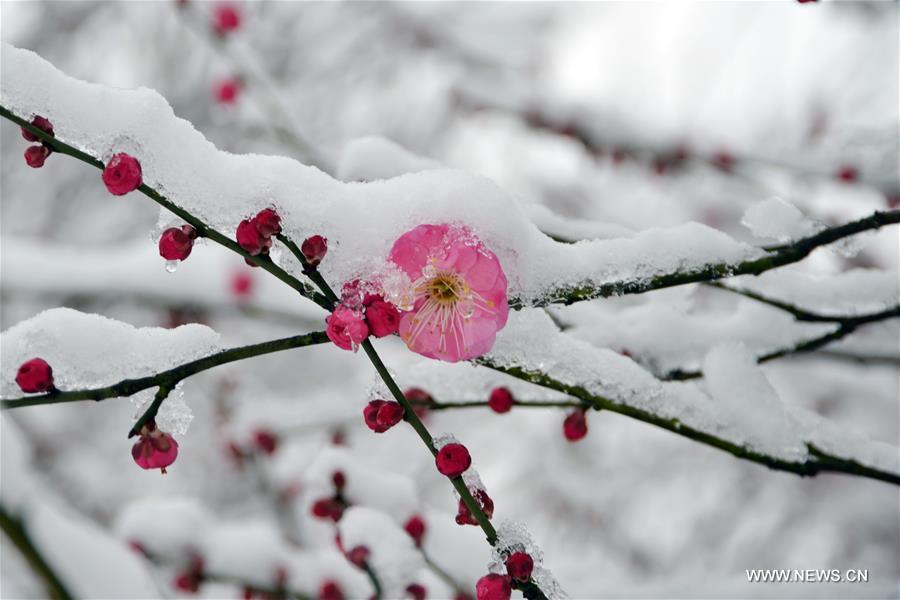Chinese scientists unveil the genetic architecture of plum blossom


BEIJING - Chinese scientists have completed a whole genome re-sequencing study and constructed the world's first genome-wide variation map of plum blossom, or Prunus mume, according to China Science Daily on Wednesday.
Plum blossom is an ornamental woody plant that has been domesticated in East Asia for thousands of years. It is characterized by high nutritional and medicinal values, and tolerance to low temperatures in winter.
Plum blossom has been cultivated in China for over 3,000 years. The genetic background of plum blossom is very complicated after long-term artificial domestication and natural pollination.
Led by Zhang Qixiang from Beijing Forestry University, researchers investigated the genetic architecture of floral traits in plum blossom and its domestication history by sampling and resequencing a total of 351 samples. The research was published in Nature Communications.
The research shed light on the genetic basis of plum blossom's ornamental traits. It also provided a theoretical basis for the breeding and the improvement of plum blossom.
- Xi's attendance at 32nd APEC Economic Leaders' Meeting guides Asia-Pacific cooperation: Chinese FM
- Science festival ignites public curiosity nationwide
- Symposium stresses recognizing China's WWII efforts
- Chinese president's special envoy attends opening ceremony of Grand Egyptian Museum
- Academic journal on Hongshan culture launched in Liaoning
- Shenzhen hailed as ideal choice for hosting APEC




































